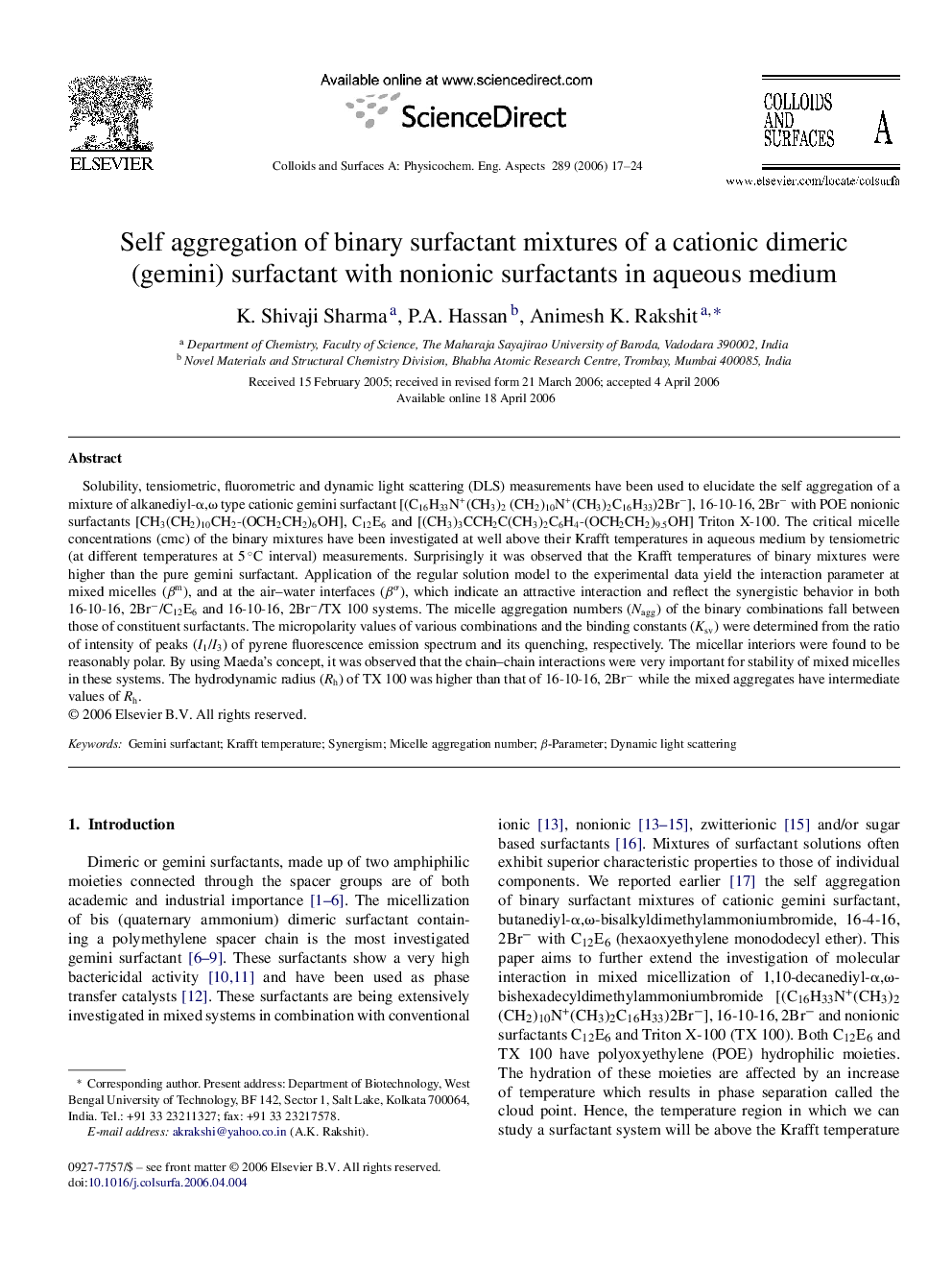| Article ID | Journal | Published Year | Pages | File Type |
|---|---|---|---|---|
| 598126 | Colloids and Surfaces A: Physicochemical and Engineering Aspects | 2006 | 8 Pages |
Solubility, tensiometric, fluorometric and dynamic light scattering (DLS) measurements have been used to elucidate the self aggregation of a mixture of alkanediyl-α,ω type cationic gemini surfactant [(C16H33N+(CH3)2 (CH2)10N+(CH3)2C16H33)2Br−], 16-10-16, 2Br− with POE nonionic surfactants [CH3(CH2)10CH2-(OCH2CH2)6OH], C12E6 and [(CH3)3CCH2C(CH3)2C6H4-(OCH2CH2)9.5OH] Triton X-100. The critical micelle concentrations (cmc) of the binary mixtures have been investigated at well above their Krafft temperatures in aqueous medium by tensiometric (at different temperatures at 5 °C interval) measurements. Surprisingly it was observed that the Krafft temperatures of binary mixtures were higher than the pure gemini surfactant. Application of the regular solution model to the experimental data yield the interaction parameter at mixed micelles (βm), and at the air–water interfaces (βσ), which indicate an attractive interaction and reflect the synergistic behavior in both 16-10-16, 2Br−/C12E6 and 16-10-16, 2Br−/TX 100 systems. The micelle aggregation numbers (Nagg) of the binary combinations fall between those of constituent surfactants. The micropolarity values of various combinations and the binding constants (Ksv) were determined from the ratio of intensity of peaks (I1/I3) of pyrene fluorescence emission spectrum and its quenching, respectively. The micellar interiors were found to be reasonably polar. By using Maeda's concept, it was observed that the chain–chain interactions were very important for stability of mixed micelles in these systems. The hydrodynamic radius (Rh) of TX 100 was higher than that of 16-10-16, 2Br− while the mixed aggregates have intermediate values of Rh.
